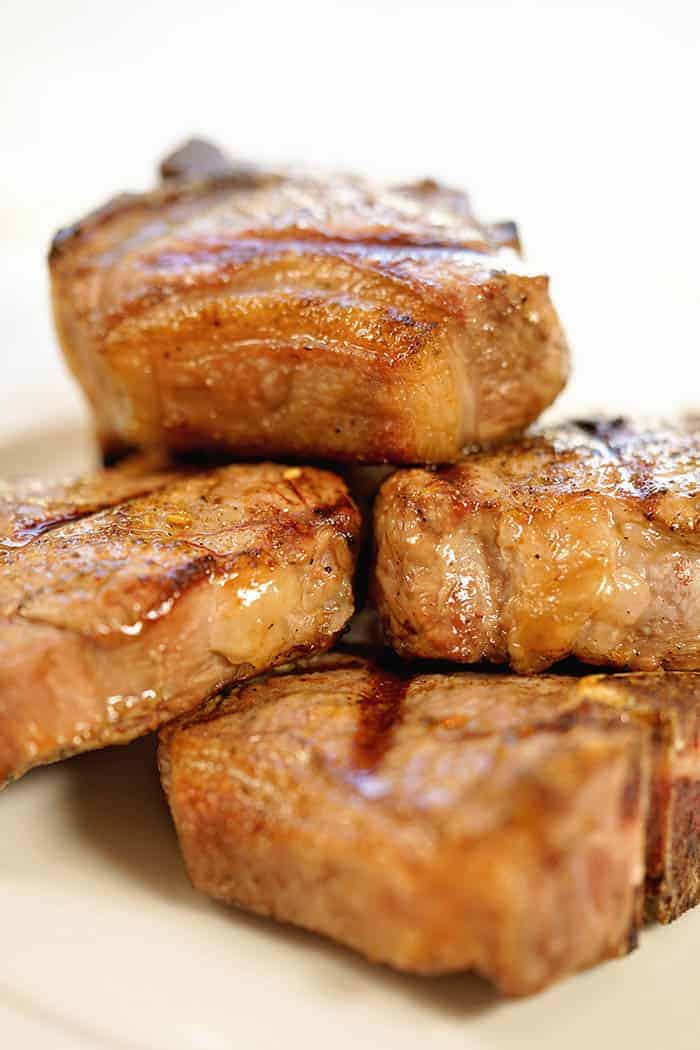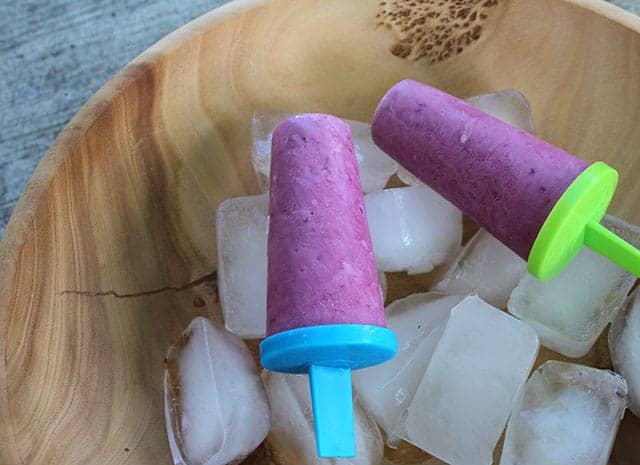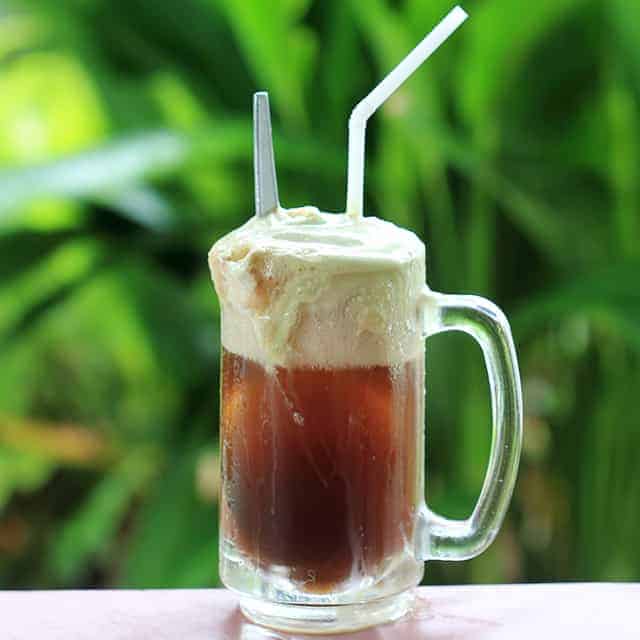You need to make this. Repeat. You need to make this.
If there’s anything you should learn as a homesteader, it’s how to make bone broth. Why? Bone marrow is one of the most nutrient-dense food available, and when you make bone broth, you release those locked-up vitamins. If you’re sick, you eat chicken soup, right? This is that chicken soup times a thousand.
You can do this even if you live in the smallest apartment on earth, and it’s super simple. You can use any kind of meat: chicken (bones and/or feet), pork, beef, and even fish heads.
It’s your passage to independence. You’re frugality street cred will go up. You’ll be a kitchen superstar. And your body will thank you.
Bone broth, and the fat and cartilage it contains, is excellent for your body, your skin, those joints that start to ache as we age, you name it. It’s wholesome, nourishing food that at the same time takes your frugality to the next step. That chicken you roasted for dinner can also make lunch the next day. When you make your first risotto with your bone broth, you’ll know what I mean. Promise.
So, how do you make the best broth on earth? Here’s your go-to guide:
1. Roast the bones (if you’re using raw bones/cartilage). Roasting brings out every inch of flavor in the meat, and starts to break down some of that cartilage you want in your broth. You’ll increase the nutrient value of the meat as you roast it.
2. Put the roasted bones in your stock pot. Be sure to use a large pot! You can use a regular stock pot or a pressure cooker. (I use a regular stock pot, but if you use a pressure cooker, follow you cooker’s instructions to properly cook the bones.)
3. Cover the bones with water.
4. Add a closed cheese cloth with herbs to the pot. You can use oregano, thyme, bay leaves, pretty much any herbs your heart desires.
5. Bring to a boil, then lower the heat and simmer for 3 hours. Skim any foam that might surface.
That’s it. Super simple, right?
Some of the best bone broth is made using cartilage-rich parts, such as pork trotters or chicken feet. You can also use tendon to give your broth that extra protein kick. Don’t be afraid to use these parts – it seems yucky at first, but you get used to it. You might even get the fat to congeal at the top, which is considered the gold standard of bone broth. Your visual affirmation that you’ve made something wonderful (if you’re bone broth doesn’t congeal at the top, don’t worry. Mine doesn’t a lot of the time, and it’s still a super food, and amazingly good for your body).
If you want to make stock and not necessarily broth, leave out the bag of herbs.
Storing your broth:
You can store your broth in a number of ways. I freeze mine, but you can also pressure can it (don’t do a hot water bath, be sure to pressure can it). It freezes beautifully, so if canning isn’t an option, you can freeze without worry. If you plan to use immediately, then the refrigerator is obviously a good option.
How to use:
Use bone broth any way you would use water. I’ve used it when making biscuits (makes them super savory), in soups, for risotto. I add it to scrambled eggs for an extra protein and flavor kick. I’ve even been known to make gravy out of bone broth (kids love it).
Mistakes to avoid:
- Be sure to roast the bones before starting your broth. Not only will your broth be super flavorful, you’ll avoid issues like blood in your broth. It won’t hurt you, but it’s not the most visually appealing.
- Use the bones twice, for 2 different batches of broth. The second batch will not be as flavorful, but it will still be great for recipes requiring water – you can substitute the bone broth for water. Whatever your cooking will still get a nutritional boost, and since the broth isn’t the center of the recipe, you won’t miss out on any flavor.
- One thing I don’t endorse, and some may disagree with me, is keeping a pot of broth constantly simmering. There’s some advice out there about the benefits of the constantly available simmering pot of broth. I think it’s an unsafe practice, and it uses a lot energy. I personally make my broth, then clean the pot and wait until I have enough bones to make another batch. Typically from one roast chicken, I get enough broth to last me a week or so, depending on my menu.
Until next time!
I participated in MisAdventures Monday Blog Hop!
Maat van Uitert is a backyard chicken and sustainable living expert. She is also the author of Chickens: Naturally Raising A Sustainable Flock, which was a best seller in it’s Amazon category. Maat has been featured on NBC, CBS, AOL Finance, Community Chickens, the Huffington Post, Chickens magazine, Backyard Poultry, and Countryside Magazine. She lives on her farm in Southeast Missouri with her husband, two children, and about a million chickens and ducks. You can follow Maat on Facebook here and Instagram here.







I’ve heard of bone broth before, but never tried it…….I didn’t know it was so good for you either
So I understand how to do it, but I’m confused as to the meat to use. So let’s say chicken meat. Can I use a whole cut up chicken that I’ve already cooked?
I recently did research for one of my articles about leaky gut. The doctor strongly recommends a bone broth fasting for three days to clean out the complications of leaky gut. I want to do the fasting this Friday.
Will you please email me to ensure I get your reply? I’d really appreciate it!
I’ll shoot you an email, but I’ll also answer here! It’s a good question!
You can use any kind of meat. Chicken works well, so does beef or pork (or rabbit, etc).
Using a whole chicken works, and in fact if you end up buying a whole chicken to cut up for other meals, there’s a section that’s left (the spine) which I use for bone broth.
For the fasting you want to do, I don’t know which meat is recommended, so ask your doctor which one you should use.
Thanks for stopping by!
Cook for only 3 hours? For a rich broth try 3 days on low in a crock pot! Also, adding ACV helps to properly break down the bones….thus the term bone broth.
Thanks for the comment. I’ve never tried it for 3 days on low. I probably would not try it because something heated for that long at a lower temperature would make me concerned about bacterial growth.
I’ve simmered bones for a few hours on the stove and it works great. My favorite method now is the crock pot, on low either all day or overnight. It gets plenty hot (even bubbling a bit) and I don’t have to watch it. Then ladle the broth into jars or whatever and cool them in the fridge and then freeze them. Sooo flavorful with a nice golden layer of fat on top and the broth itself is like jelly until you heat it back up. Cover the bones back up with water and add a dash of apple cider vinegar and cook it again for a less rich but still good broth. You’re absolutely right about adding herbs. The smell of chicken and herb broth simmering in the house is so comforting and tantalizing.
I use these broths as a base for soups, or to make extra tasty rice, or sometimes to make a balsamic vinegar/brown sugar/soy sauce/broth glaze that goes great with everything (stir fry, roast beef, roasted root veggies, etc). Whether on the stove or in the slow cooker, bone broth is wonderful and I’m so glad I learned this skill. It’s funny to call it a skill but that’s exactly what it is and it makes me feel a little proud to have this “skill” under my belt. Now to practice baking bread so it comes as easily as making broth.
Oh by the way, I sometimes take a little broth for myself but leave the rest in the slow cooker, take out the bones, and add a bunch of healthy stuff that is safe for dogs (sweet potato, spinach, apples, carrots, kale, wild rice, peas, whatever is on hand) and cook it on low until everything is soft. Then use a fork or potato masher to mash up the food a little bit so the dog can’t pick out the carrots that she doesn’t like too much. She gets a cup or so of this concoction with her food each day and adores it, except unmashed carrots. Hopefully it helps deliver extra minerals and vitamins, as well as help her joints. The cats get some plain broth without veggies and lap it up like crazy.
Anyway I’m sorry for rambling so much. I really like this post, and this blog, and just wanted to add my two cents. Thank you!
Hi Amanda, thanks for stopping by! Love your ideas!